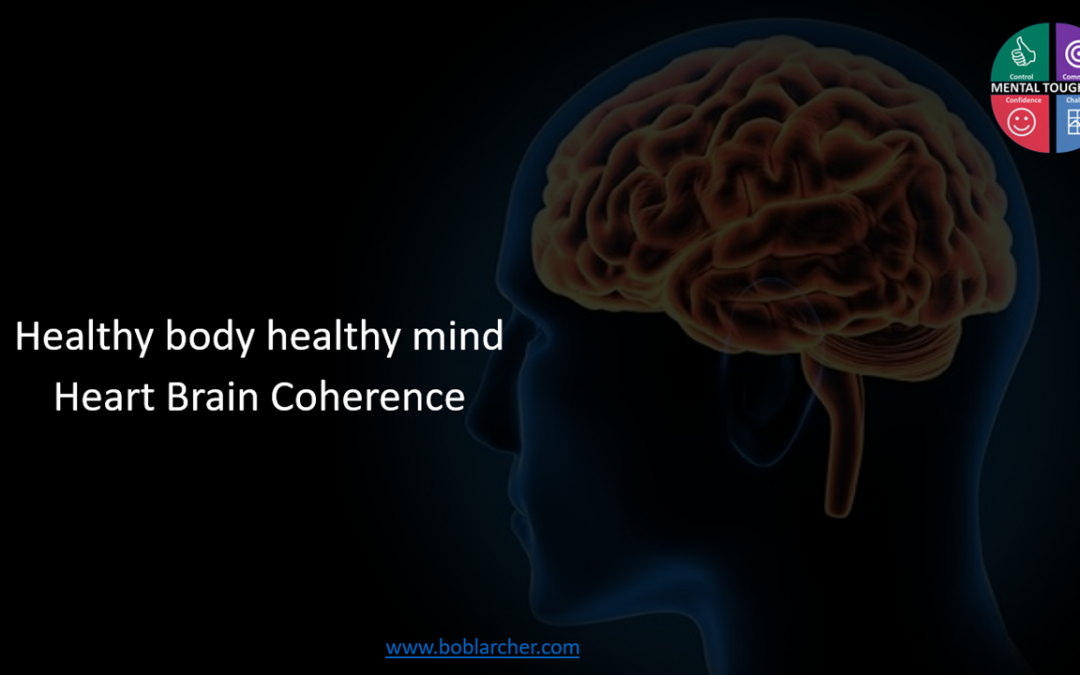Most of us have experienced driving a car and knowing it is not running well. This can be due to many factors, one of which could be that the timing is off. This means the spark plugs are not firing in a synchronized manner. The car still runs, but not very well.
We can apply the same thinking to our bodies. When our body is out of sync, it functions, but not as well as it could. This means that our autonomic nervous system, our hormonal system and our immune system are not working in a synchronized manner.
If we want to fix our car, we would probably (at least in the “old-days”) lift up the hood and try to adjust the timing such that the spark plugs were synchronised and firing in the correct order. We can re-synchronise our body systems by creating a state of “Coherence” and improving both mental focus and emotional stability – both elements of Mental Toughness.
According the HeartMath Institute, “When the heart is coherent, the body, including the brain, begins to experience all sorts of benefits, among them are greater mental clarity and ability, including better decision making.
Coherence is the term used by scientists to describe a state of “high psychological efficiency in which the nervous, cardiovascular, endocrine and immune systems are working efficiently and in harmony”. Coherence is seen as the basis of optimum performance and health in the human being.
Most of us have been taught in school that the heart is constantly responding to “orders” sent by the brain in the form of neural signals. However, it is not as commonly known that the heart actually sends more signals to the brain than the brain sends to the heart! Moreover, these heart signals have a significant effect on brain function – influencing emotional processing as well as higher cognitive faculties such as attention, perception, memory, and problem-solving. In other words, not only does the heart respond to the brain, but the brain continuously responds to the heart.
Scientists have shown that the heart communicates with the brain and body in four ways:
- Neurological communication (nervous system)
- Biochemical communication (hormones)
- Biophysical communication (pulse wave)
- Energetic communication (electromagnetic fields)
The heart has its own neuronal circuit interrelated with the emotional brain that controls the emotions and physiology of the body. When we are stressed our body is not synchronised due to negative emotions, causing disorder in heart rate and the nervous system that leads to the blocking and inhibition of the neocortex or rational brain. In contrast, positive emotions create harmony in the nervous system and heart rate, provoking unblocking at the level of the brain, at the same time the rest of the systems of the body synchronise in this state that scientists call Coherence.
We can use the power of our heart to balance our thoughts and emotions, doing this can help us to achieve energy & mental clarity and to feel better – fast anywhere!!
Before I write about the “quick coherence” technique, a couple of fascinating facts I have discovered recently about the functioning of the heart.
Most of us are aware of our “normal” heart rate (HR), usually somewhere between 60 and 80 beats per minute and most of us believe that a “healthy heartbeat” is something even and steady, like a metronome.
I’m not sure that everyone is aware of Heart Rate Variation (HRV); the variation in the time interval between one heartbeat and the next. Our heart rate actually changes from beat to beat. When we inhale our heart rate speeds up and when we exhale it slows down, since the time between beats is measured in milliseconds this is normally imperceptible; hence no change in HR – our heart is not the metronome we thought it to be. For example, 60 beats per minute HR could mean 1 beat per second or it could mean an average of 1 beat every 0.5s, 1.5s, 0.5s, 1.5s, etc.
The heart continually oscillates between acceleration and deceleration in a tug-of-war within the autonomic nervous system, controlled by two “pacemakers” in the heart that create the heart’s rhythms. Our thoughts, emotions, and experiences of the external world are tightly connected to the functioning of our nervous system, heart rhythm and breathing. The more flexible we are, the more capable we are of dealing with life’s inevitable stressors. This flexibility is reflected in our nervous system and can be measured, using HRV as an indicator.
We each have an optimal level of HRV and the stability or coherence of our personal HRV is important:
- too much instability, such as nervous system chaos, is detrimental to efficient physiological functioning and energy utilization
- too little variation indicates chronic stress or inadequate functioning in various levels of self-regulatory control systems
HRV was something very inaccessible up to not so long ago; today there are a lot of applications that can be downloaded onto smart phones or computers that allow us to measure HRV in “real time”
Even without being able to measure your HRV, there is a technique known as “Quick Coherence” which you can use when you begin feeling a draining emotion such as frustration, irritation, anxiety or anger; those moments where mediating would be good, but there isn’t the time.
Step 1 – Heart Focus
Focus your attention in the area of your heart, in the centre of your chest.
Step 2 – Heart Breathing
As you focus on the area of your heart, imagine your breath flowing in and out through that area. Breathe in and out slowly, deeply and evenly; the same time for both breathing in and breathing out; usually around 7 seconds.
Step 3 – Heart Feeling
As you continue to breathe evenly, deeply and focused on your heart, recall a positive feeling; a time when you felt good inside, and try to re-experience it. It could be feeling appreciation for the good things in your life, the love and care you feel for someone, or a special place that means something positive to you.
The next step is to take this technique and make it a habit. You can do this by picking certain times of the day when you can give yourself a guilt-free three to five minutes to focus on your heart; at the start of your day, just before lunch, just before bed. Waiting in line is also a great time to use this technique instead of getting aggravated. The more you practice, the more quickly heart coherence emerges and the easier it is to sustain.
If you want to go further, the HeartMath site is well worth a look; otherwise type “Heart Rate Variance” or “Quick Coherence” into your search engine and you will find a lot of articles and research.

I help people to develop their interpersonal skills, usually within a leadership or teamwork context. If you are looking to develop your leadership, I might be able to help. I’ve been doing this for almost 40 years; roughly four thousand days of seminars, workshops, conferences, coaching, offsites, webinars, etc. – put back-to-back that makes almost ten “full” years.



